34+ Sample Wedding Planning Checklist Templates
-
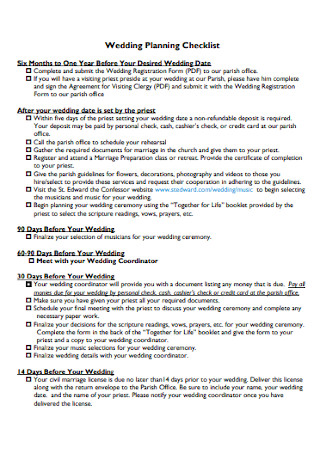
Sample Wedding Planning Checklist Template
download now -
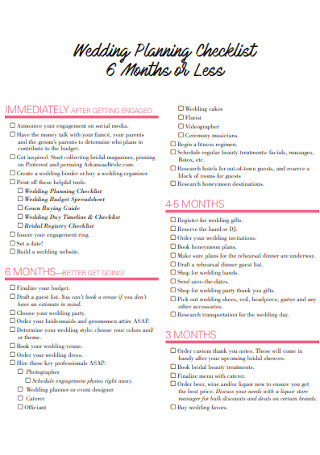
Wedding Planning Checklist Example
download now -
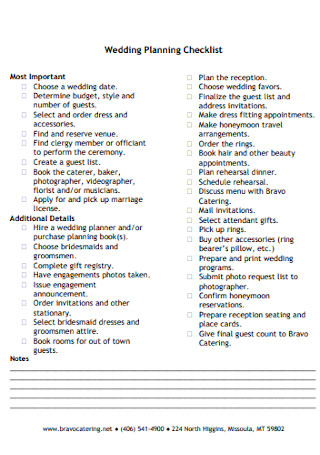
Wedding Catering Planning Checklist
download now -
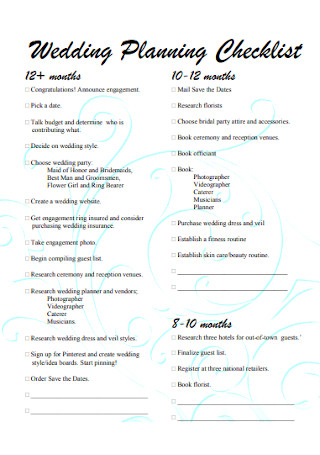
Wedding Year Planning Checklist
download now -
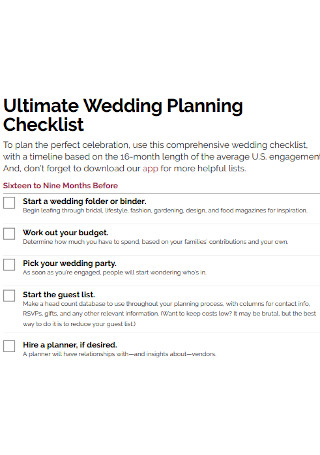
Ultimate Wedding Planning Checklist
download now -
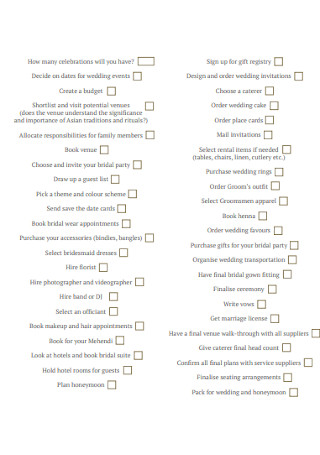
Asian Wedding Planning Checklist
download now -

Simple Wedding Planning Checklist Template
download now - “]
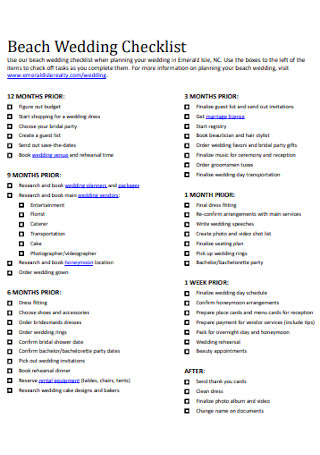
Beach Wedding Planning Checklist
download now -
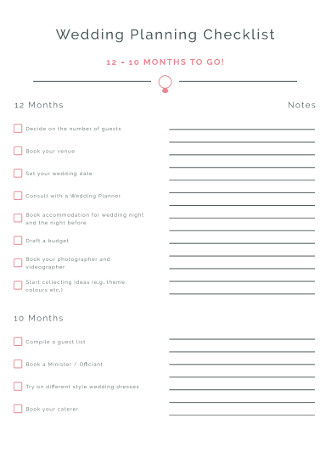
Wedding Month Planning Checklist
download now -
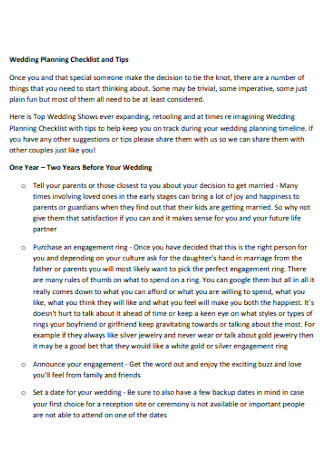
Wedding Shows Planning Checklist
download now -
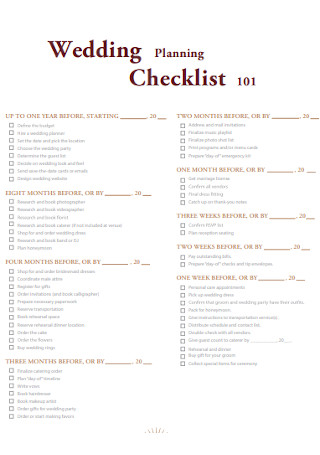
Wedding Planning Checklist Format
download now -
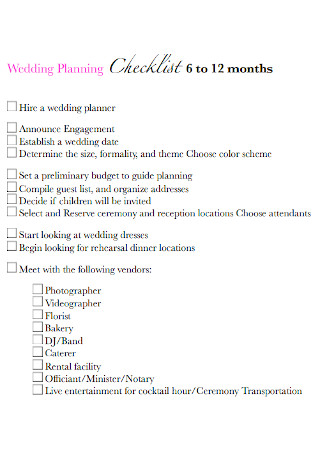
Wedding Event Planning Checklist
download now -
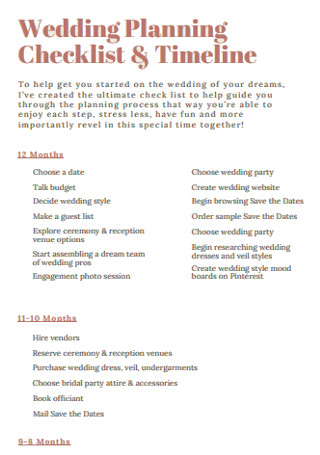
Wedding Planning Checklist and Timeline
download now -
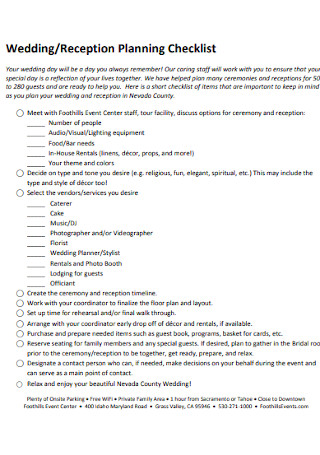
Wedding Reception Planning Checklist
download now -
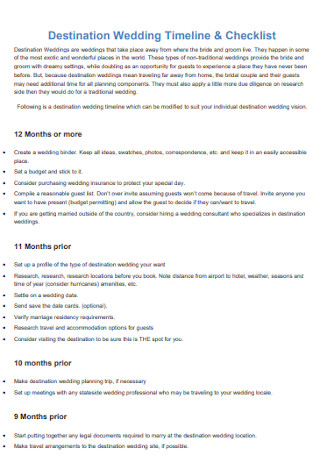
Destination Wedding Planning Checklist
download now -
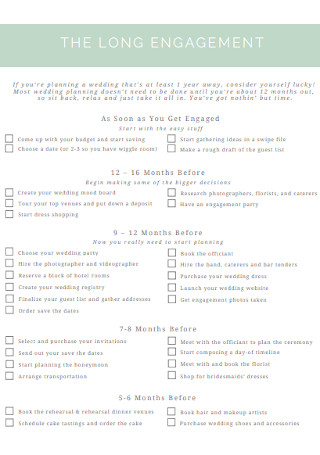
Engagement and Wedding Planning Checklist
download now -
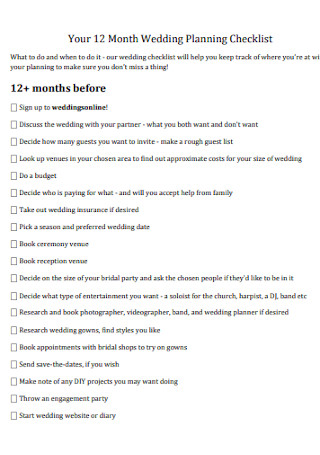
12 Months Wedding Planning Checklist
download now -
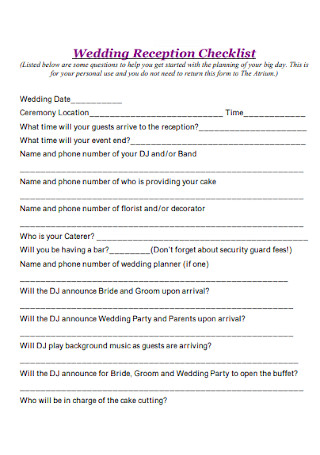
Wedding Reception Checklist Example
download now -
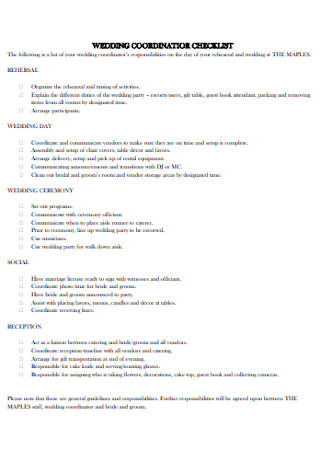
Wedding Coordinator Planning Checklist
download now -
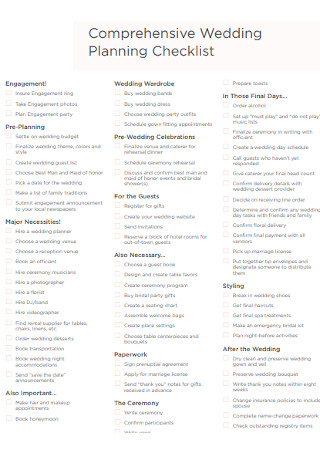
Comprehensive Wedding Planning Checklist
download now -
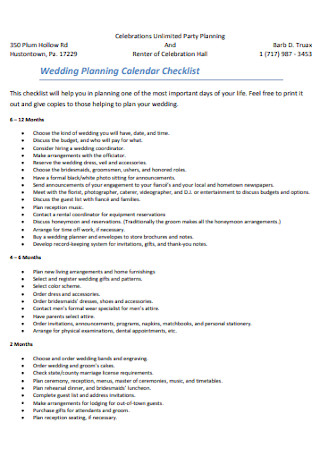
Wedding Planning Calendar Checklist
download now -
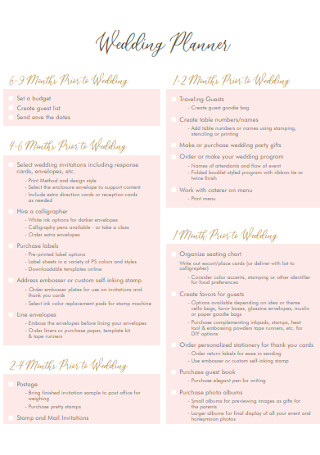
Wedding Planner Checklist
download now -
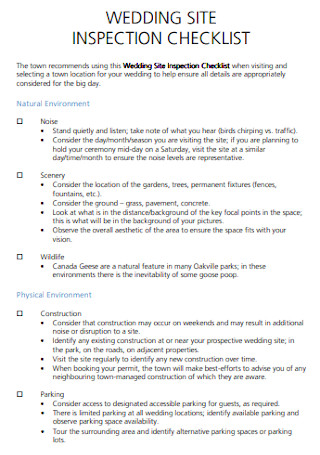
Wedding Site Planning Checklist
download now -
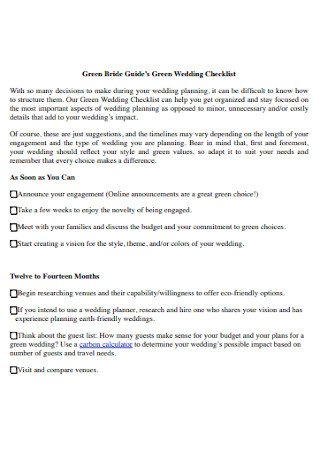
Green Wedding Planning Checklist
download now -
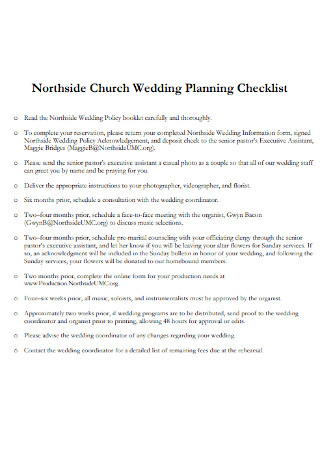
Church Wedding Planning Checklist
download now -
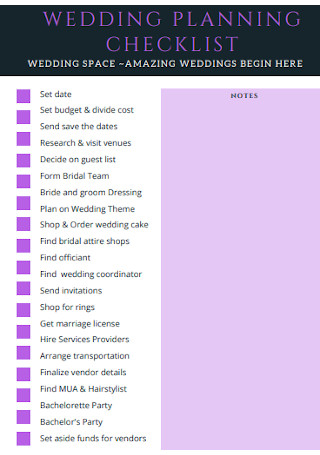
Amazing Wedding Planning Checklist
download now -
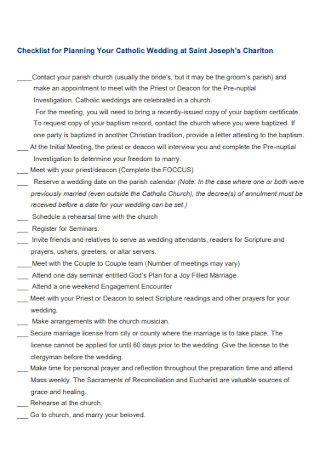
Checklist for Planning Your Catholic Wedding
download now -
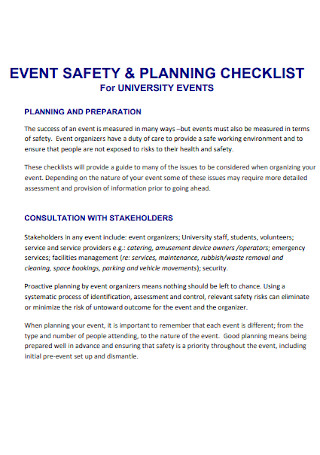
Event Safety and Wedding Checklist
download now -
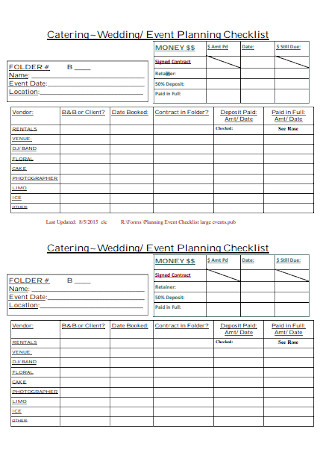
Wedding and Event Planning Checklist
download now -
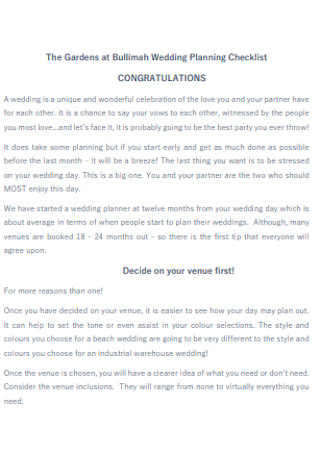
Wedding Gardens Planning Checklist
download now -
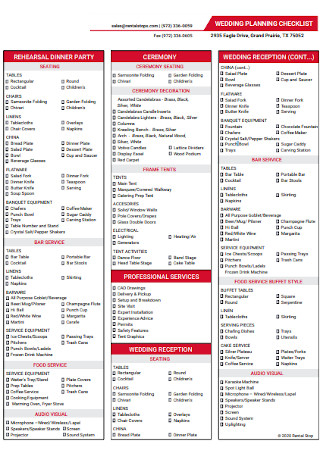
Wedding Party Planning Checklist
download now -
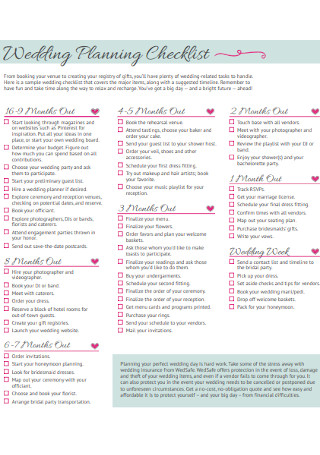
Formal Wedding Planning Checklist Template
download now -
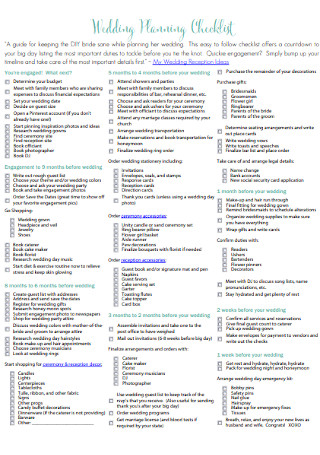
Standard Wedding Planning Checklist Template
download now -
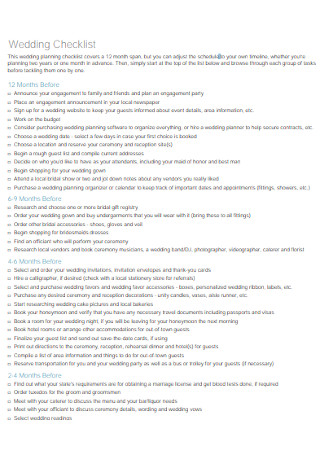
Printable Wedding Planning Checklist Template
download now -
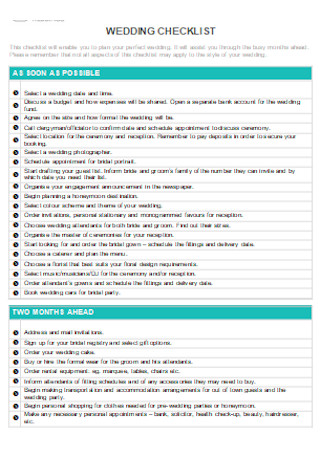
Best Wedding Planning Checklist
download now
FREE Wedding Planning Checklist s to Download
34+ Sample Wedding Planning Checklist Templates
Wedding Planning Checklists: What Are They?
Tie the Knot: Benefits of a Wedding Planning Checklist
The Anatomy of a Wedding Planning Checklist
How to Make Wedding Planning Checklists
FAQs
How are small and big weddings different?
Can I save money from a wedding planner?
How much should I pay for my wedding planner?
Wedding Planning Checklists: What Are They?
A wedding marks as the marriage ceremony—a special union between two people who are in love. And they promise to love one another until death. Since officially announcing your endless love to your partner is a huge decision, it deserves a celebration. Of course, any big event deserves to be planned. And what better way to plan your wedding than to add a wedding planning checklist to the picture? These checklists or to-do lists are detailed documents that contain all the step-by-step process on how to plan a wedding right from the get-go down to the honeymoon.
Did you know that weddings in the US usually cost around $33,900 in 2019?
More so, CNBC stated, via The Knot’s study, that 69% of couples agree that budgeting is the topmost important element in wedding plans.
Also, Statista reported that in 2019, about 61.96 million American couples are married.
When Should You Plan a Wedding?
After an engagement, it is normal for couples to think about when to plan the wedding. But it would be wiser to give approximately three weeks before planning the wedding. Remember, you will invest a lot of time and decision-making for the plan. However, you don’t have to plan everything at once. Take it slowly, and that explains why you use a wedding planning checklist—to handle it step by step. Thus, preparations are not as stressful as it seems.
Who Creates Wedding Planning Checklists?
It is expected for the soon-to-be couple to prepare the wedding planning checklist. Why? Because they decide how the wedding celebration ends up in the first place. But, the job can be given to other people assigned as wedding planners too. That way, the couple can focus on other important matters and leave the planning checklist to the wedding coordinator, family members, or anyone appointed to prepare the wedding. Nevertheless, couples must be informed about the list to keep them updated about the plan.
Tie the Knot: Benefits of a Wedding Planning Checklist
In tying the knot, great opportunities come by. You spend time with your lifetime partner daily, build a family, enjoy insurance and tax benefits, and proudly announce that your partner is legally yours. And back to using wedding planning checklists, opportunities are at play as well. What are they? In this section, find out the benefits of a wedding planning checklist:
The Anatomy of a Wedding Planning Checklist
Since you already know the advantages of using the wedding planning checklist, how about what you can see from that list? Yes, people have different content, format, and details inside their wedding checklist. But there are common factors involved which you should also incorporate in your list. Without further ado, learn more about the anatomy of a wedding planning checklist:
Title
So a checklist serves its purpose, the “Wedding Planning Checklist” label should be seen in the checklist sheet. Also, add the title, which would be the name of the groom and the bride to signify whose wedding is being planned. Other lists include a short introductory statement as well about the document’s purpose and related details.
Goals or Objectives
Wedding checklists are incomplete without the goals, objectives, tasks, or errands. Bear in mind that those details are what you list down in the first place. And you aim to commit to every job until the entire plan for the wedding reaches success. Also, here’s a tip: review every listed objective often to ensure no critical task is forgotten.
Categories
Not everything listed in a wedding planning checklist is considered a task. Other details shape the whole list and are still relevant. So to prevent a disorganized sheet, categories exist. There could be one group of info specifically for the schedule of events and another for the amount—per guest, table, chair, etc. And don’t forget the budget involved no matter what. The Knot’s study even added that 69% of couples consider budgeting as the most crucial wedding planning element.
Checkboxes
Checklists are called checklists when they contain checkboxes, lines, circles, or any shape expected to be marked. You put checkmarks to the blanks after every finished goal. Your only concern is to ensure the correct box is marked every time you check because maybe an unfinished task was marked, and that creates a problem.
Others
Add extra lines for remarks, comments, and others. That extra space is where you input additional details not included in the checklist or any last-minute detail. So, keep the “Others” section as your free space and always bring with you a pen in case you note down anything important there.
How to Make Wedding Planning Checklists
In America, around 61.96 million couples are married in 2019. And to boot, the average cost of American weddings was about $33,900 of that same year. Imagine the many different wedding ceremonies, receptions, and plans involved from each couple there. In fact, you can create a different wedding experience of your own as long as you have it all planned out. And to start the preparation process, practice these steps on how to make wedding planning checklists:
Step 1: List All Tasks in a Draft
Did you ever wonder how excellent checklists are made? They all start with a draft. Start by brainstorming all the objectives to achieve for the wedding in a document. Don’t mind the specifics, sequence, and further details yet because we will get there. Just make sure you’re reminded about your purpose, which is to plan the wedding, to avoid losing track. And after listing all the goals to accomplish, slowly correct them one by one.
Step 2: Group the Tasks into Categories
To begin correcting the enlisted tasks, outline the categories which are part of the wedding checklist anatomy. You could make two main categories first that outline the objectives for the ceremony and another for the wedding reception. Next, specify the categories further aside from the tasks. Examples of categories would be your contact list and wedding budget. Whatever works on how to organize the details into categories is up to you.
Step 3: Create a Timeline
Be sure that each goal to follow has its specific timeline. For example, you could set the schedule for the dress shopping, venue search, and so much more. Include timesheets to your plan because timelines are more than just writing the month, day, and year. But the challenge here is to be realistic. For example, you don’t just give yourself 30 minutes to find the perfect wedding attire. It could take longer, especially when you want to stand out, match with a specific theme, and other metrics. Allow possible extensions to your estimated time to adjust well.
Step 4: Be Straightforward
Be direct always. Some checklists end up becoming too wordy that a lot of unnecessary words are present. Don’t do that. An understandable but straightforward list is a hundred times better than creating a list that has a lot of fancy words but is making things complicated. However, don’t be broad. Be specific in case you forget what some instructions imply in your sheet because of not providing enough details.
Step 5: Update Regularly
When you start placing checkmarks on your planning checklist, stay responsible for keeping up. A wedding planner’s job includes updating the document regularly. Prevent tardiness in writing checkmarks to a list because some parts may be forgotten if you did not update properly. You can seek help from other assistants if tasks are hard to handle anyway. And most importantly, don’t delay in finishing any job because committing to the plan is crucial.
FAQs
How are small and big weddings different?
The difference depends on a lot of factors from the wedding budget, location, and the number of guests. For example, a small wedding often refers to a wedding involving around 50 people or less. Meanwhile, a medium wedding consists of about 50-150 attendees. And lastly, a big wedding has more than 150 guests.
Can I save money from a wedding planner?
Yes, you can save money. Others might doubt how it is possible because you pay for a wedding planner in the first place. But remember, expertise saves a lot of time, money, and effort. Planners help you in deciding how to save money and look for budget-friendly alternatives for your wedding.
How much should I pay for my wedding planner?
Generally, wedding planners cost about $1,800. But the price differs from the service packages included. Some planners even cost around $4,000 for high-end weddings. And if you’re confused, don’t hesitate to negotiate with the planner for confirmation.
Indeed, planning a wedding takes time. You may have around 6–12 months to prepare. But you never know what could happen in reality. If planning takes too long, there might be issues if your partner moves out for a job, a family member might die, the anticipation of marrying lessens, or other circumstances that could delay the wedding even further. On the other hand, a last-minute wedding could leave you overwhelmed, and it might fail. Instead, balance the timeline and plan that can be structured using wedding planning checklists.
